|
Most people would probably agree that the ocean is the most mysterious
place on our planet. It covers 70% of the earth’s surface, and yet there
are vast amounts of it that remain unexplored; in fact, scientists
estimate that despite all of our advancements in underwater technology,
we have still only explored a rather minute 5% of it.
With that in mind, it’s no wonder that from time to time strange-looking
creatures get washed up onto the shore. New ocean-dwelling species are
being discovered all the time, and sometimes they end up coming to us
rather than the other way around. Then there are the bizarre and seldom
spotted animals that live in the deepest depths that, when washed up
ashore, provide a rare opportunity for scientists to discover more about
them. Finally there are the seriously creepy-looking animal corpses that
take much effort just to identify exactly what they are.
Whatever category these some creatures from the ocean fall into, one
thing’s for certain — they will probably make you think twice about
dipping your toe in the sea next time you’re at the beach!
|
|
East River Monster
This animal corpse wouldn’t look out of place on the set of a horror
movie. It was discovered on a beach under the Brooklyn Bridge in New
York on July 22, 2012, and is similar in appearance to the Montauk
Monster of 2008. This creature, which has become known as the ‘East
River Monster’, was found by Denise Ginley, who told The Huffington
Post: “We found the dead creature lying on the strip of sand beside the
East River, on the Manhattan side. … It looked like the tide probably
washed the carcass up there along with some driftwood.”
The jury is still out on what exactly the animal is; the NYC Parks
Department discarded of the corpse before any kind of analysis could be
performed. A spokesperson said at the time that it was a cooked pig, but
photographer Ginley refuted this claim, saying “the feet are not
pig-like at all… No hooves or cloven feet to be seen — it definitely had
five toes on all its paws, front and back.” |
|
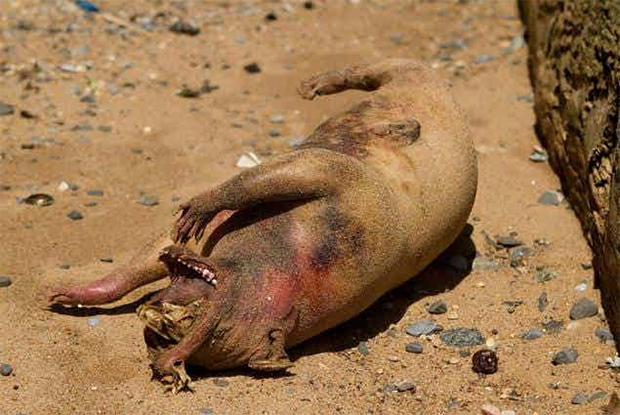 |
|
Unknown Whale Species
When a young biology teacher came across this animal carcass in St
George, Alaska, in June 2014 he initially believed it to be the corpse
of a Baird’s beaked whale. However, upon closer inspection, the 24 feet
(7.3 meters) long body looked different to the usual specimens; the
dorsal fin was too large and floppy, the flesh too dark and although it
was too short to be adult of the species, its teeth showed signs of old
age.
After a wealth of scientific tests it was found that this carcass was
that of a whole new species entirely — one that has never been seen
alive. Phillip Morin, a molecular geneticist at the National Oceanic and
Atmospheric Administration’s Southwest Fisheries Science Center said of
the shocking and extremely rare find: “We don’t know how many there are,
where they’re typically found, anything. But we’re going to start
looking.” |
|
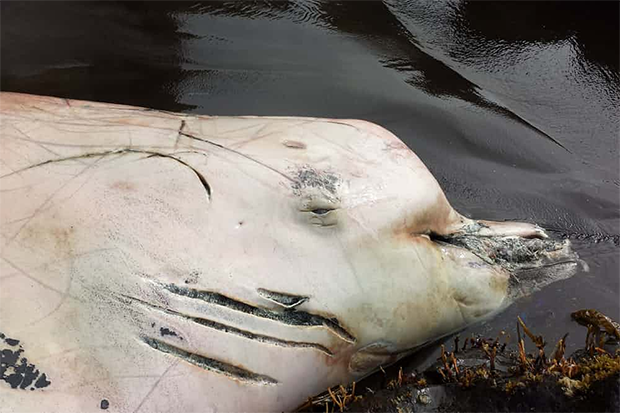
|
|
Blue Dragon
This stunning sea slug – or Glaucus Atlanticus to give it its scientific
name – was found washed ashore on a beach in Queensland, Australia, in
November 2015. It was most likely in pursuit of its favorite prey close
to the shoreline; the blue bottle jellyfish, whose sting cells it then
stores on its body as protection against potential predators such as
fish and birds.
Tempting as it may be, you definitely wouldn’t want to hold one of these
alien-like creatures. Despite growing up to only 3 centimeters (1.2
inches) in length, they produce a powerful sting from their wing-like
appendages that is said to be extremely painful for anyone unlucky
enough to come into contact with one. In fact, they are so venomous that
they are fully capable of killing other poisonous sea creatures such as
the much-feared Portuguese man-o-war, which incidentally is another of
its preferred delicacies. |
|
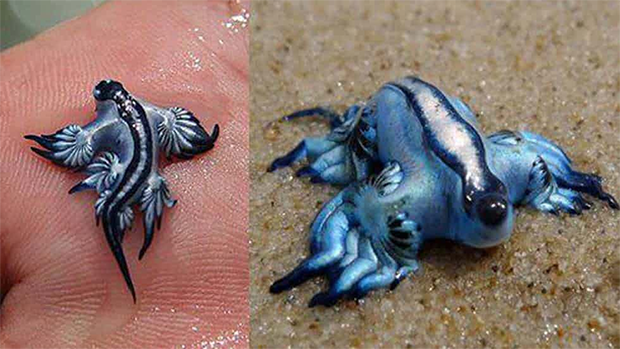
|
|
Lake Macquarie Creature
This terrifying carcass was found washed up by Lake Macquarie in New
South Wales, Australia in March 2016. Tourist Ethan Tipper was
understandably perplexed when he came across the mystery creature, so
posted photos to the internet to see if anyone would be able to figure
out what kind of animal it was.
Though it may look like a scary crocodile-dolphin hybrid, Australian
fish expert Mark McGrouther identified it as a pike eel. He told The
Daily Mail Australia: “This is the first time I have ever seen one of
them in the flesh. I suspect it was caught and discarded by fisherman
who got more than they bargained for when they tried to reel it in.”
The eels are native to the east coast of Australia where they live at
great depths, sometimes travelling up to 100 meters deep in order to
find prey. Though it’s not clear how large this specimen was, they have
been known to reach lengths of up to two meters. |
|
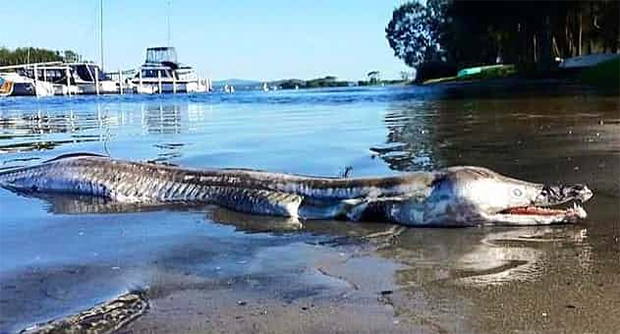 |
|
Giant Oarfish
When not one but two giant oarfish washed up on a Californian beach in
the same month in 2013 the locals were worried that it could be a sign
of an impending earthquake. These deep sea creatures are rarely seen by
humans due to the fact that they live at depths of around 3,000 feet,
although some experts have speculated that they could be the cause of
many sea serpent sightings throughout history.
The biggest of the two that washed up was a staggering 18 feet long and
was found by a snorkeler who then enlisted the help of 14 other
beach-goers to drag the huge corpse to the shore. While it isn’t
entirely clear what caused the animal’s death, marine biologists believe
that the creatures, which are actually poor swimmers, were probably
swept up in a strong current. Phil Hastings, of the Scripps Institution
of Oceanography, said: “If they get disoriented and into the surf zone,
they’ll probably have trouble maneuvering back out to sea.”
|
|
 |
|
‘The Ugly One’
When a frightening-looking dead animal washed up in the
Kitchenuhmaykoosib Inninuwug reserve in Canada in May 2010, the local
community were quick to point to an old folklore legend.
According to the Kitchenuhmayooosib website: “No one knows what it is,
but our ancestors used to call it the Ugly One. Rarely seen, but when
seen, it’s a bad omen. Something bad will happen, according to our
ancestors.” The creature is said to live in swampy creek areas where it
feeds on beavers, and has only been seen several times. However, Dr.
Mark Engstrom of the University of Toronto had a less sinister
explanation; after looking at photos of the carcass he suggested it was
probably a decomposing mink or weasel. “What has happened is that some
of the hair has come off in the water. It is silly. This is a dead
carcass that has fallen in the water.”
|
|
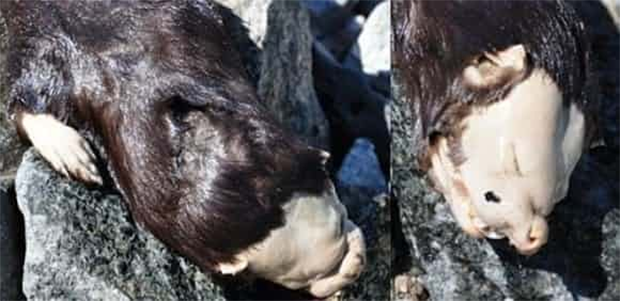 |
|
Folly Beach Monster
When a strange scaly corpse washed ashore at Folly Beach in South
Carolina in 2012, the internet was sent into a frenzy with amateur
sleuths attempting to figure out what kind of sea creature it was.
However, despite some believing it could be evidence of a new
sea-serpent like animal, the carcass, which was dubbed the ‘Folly Beach
Monster’ was actually found to be that of an Atlantic Sturgeon.
These fish, which are covered in bony plates as opposed to scales, can
grow up to a staggering 15 feet (4.6m) in length, though they usually
reach between six and eight feet. They can also reach up to 60 years of
age and weigh over 800 lbs (360 kg). Sadly though, the chances of seeing
them in the wild are becoming increasingly slim – let alone spotting one
of this huge size. They were listed under the Endangered Species Act (ESA)
by the National Oceanic and Atmospheric Administration Fisheries Service
in February 2012. |
|
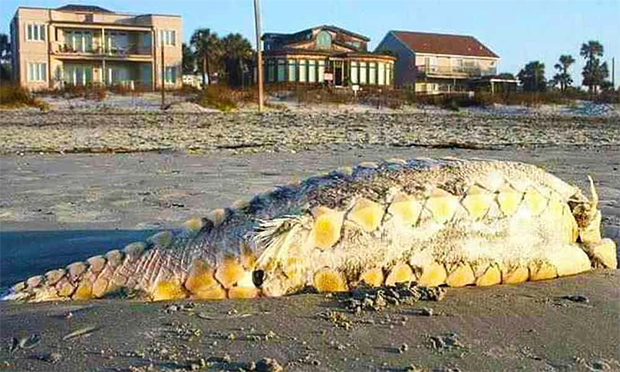 |